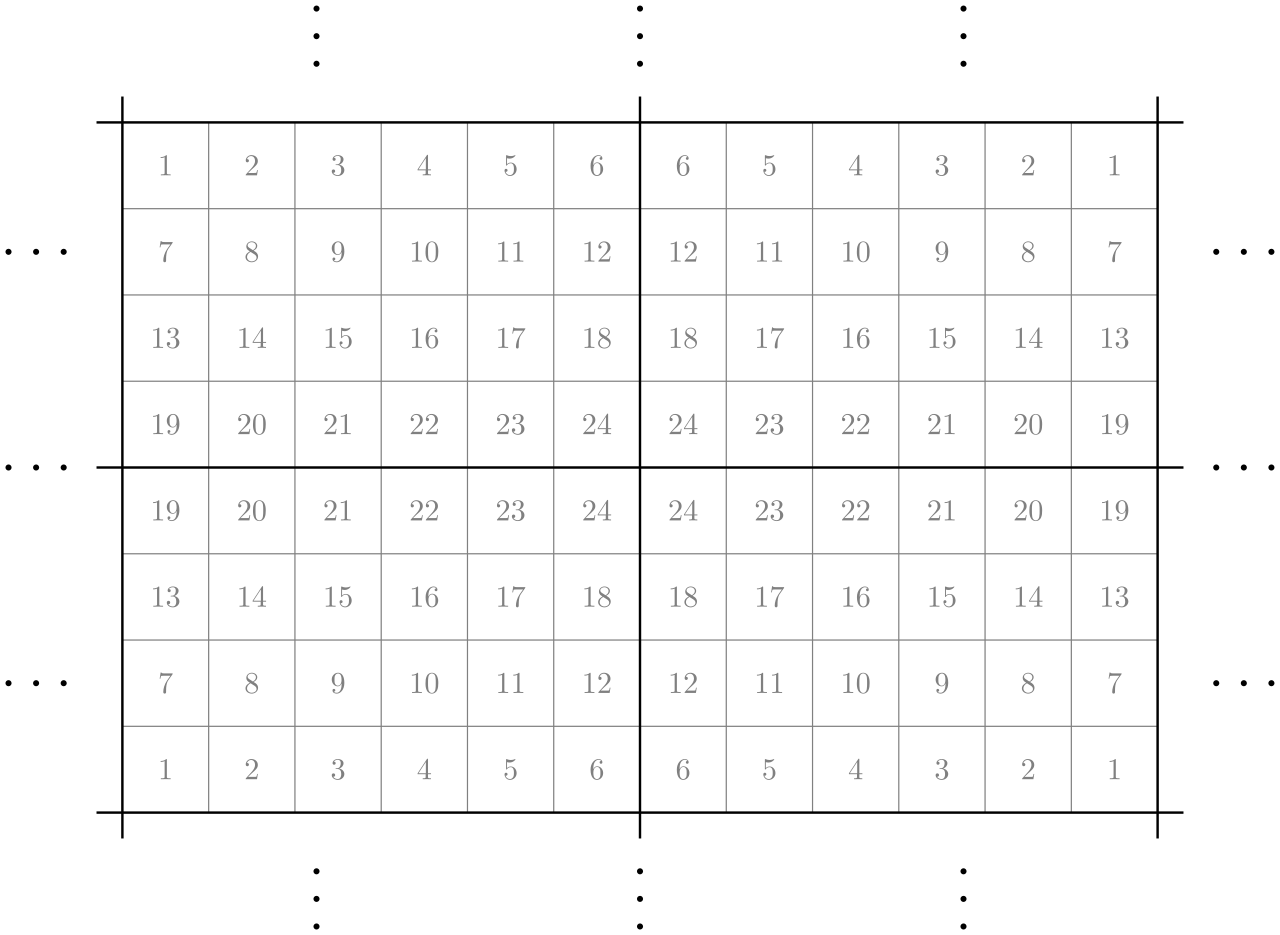Editorial for DMOPC '21 Contest 8 P4 - Grid Operations
Remember to use this editorial only when stuck, and not to copy-paste code from it. Please be respectful to the problem author and editorialist.
Submitting an official solution before solving the problem yourself is a bannable offence.
Submitting an official solution before solving the problem yourself is a bannable offence.
Author:
Subtask 1
Hint
Note that the operations affect each whiteSolution
For subtask 1, note that the operations affect each whiteTime Complexity:
Subtask 2
Hint
If two operations of the same type are adjacent, we can delete both of them.Hint 2
Analyze how a single number moves under a sequence of operations alternating between1 and 2.Solution
For subtask 2, first repeatedly delete any two adjacent operations of the same type so that we are left with a sequence of operations alternating between1 and 2. Then, we can analyze how a single number moves under a sequence of operations of this form. We can find that it will move in one direction until it "hits" a boundary of the row, then start going in the opposite direction until it hits the opposite boundary of the row, and so on. The initial direction depends on whether the starting column is odd or even. With some math, we can calculate the final position of any number in constant time.
Time Complexity:
Subtask 3
Hint
Does the order in which we perform the type1/2 operations and the type 3/4 operations matter?Solution
For subtask 3, note that since the operations affect either all rows in the same way or all columns in the same way, the type1/2 operations and type 3/4 operations are independent. Thus we can calculate the final column of a number by simulating all the type 1/2 operations as in subtask 2 and then calculate the final row by simulating all the type 3/4 operations similarly.
Time Complexity:
Subtask 4
Hint
The idea in subtask 3 no longer helps as the rows/columns are no longer independent. Try to find a simple way to visualize the operations. It may help to focus on a single row, that is, finding a simple way to describe the math in the subtask 2 solution.Hint 2
The fact that type2 and 4 operations do not swap the first and last columns/rows breaks a rotational symmetry in the problem. How can we visualize the operations in a way that preserves more symmetry?Hint 3
Repeatedly reflect the grid over the boundaries infinitely.Solution
For subtask 4, consider repeatedly reflecting the grid over the boundaries infinitely.
Now the operations are equivalent to:
- Type
1: In every row, swap the numbers on columnsand
for all integers
.
- Type
2: In every row, swap the numbers on columnsand
for all integers
.
- Type
3: In every column, swap the numbers on rowsand
for all integers
.
- Type
4: In every column, swap the numbers on rowsand
for all integers
.
- Type
5: Rotate thesubgrids clockwise or counterclockwise in an alternating checkerboard pattern. (Here, the checkerboard pattern on the original grid does not get reflected; we assign a new checkerboard pattern to the infinite grid.)
Time Complexity:
Comments